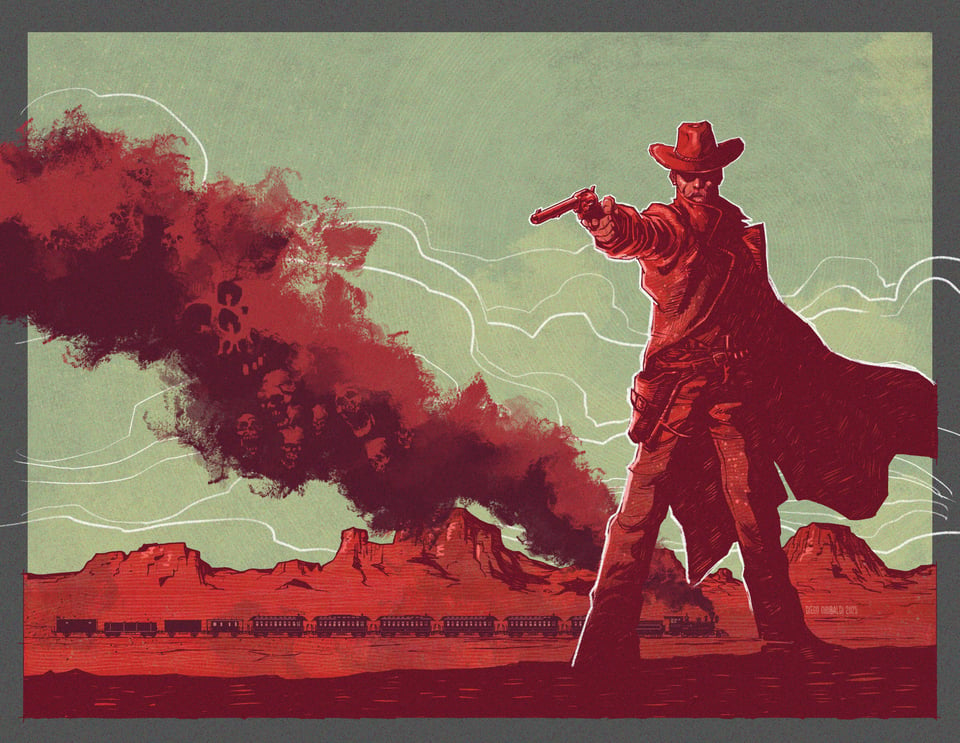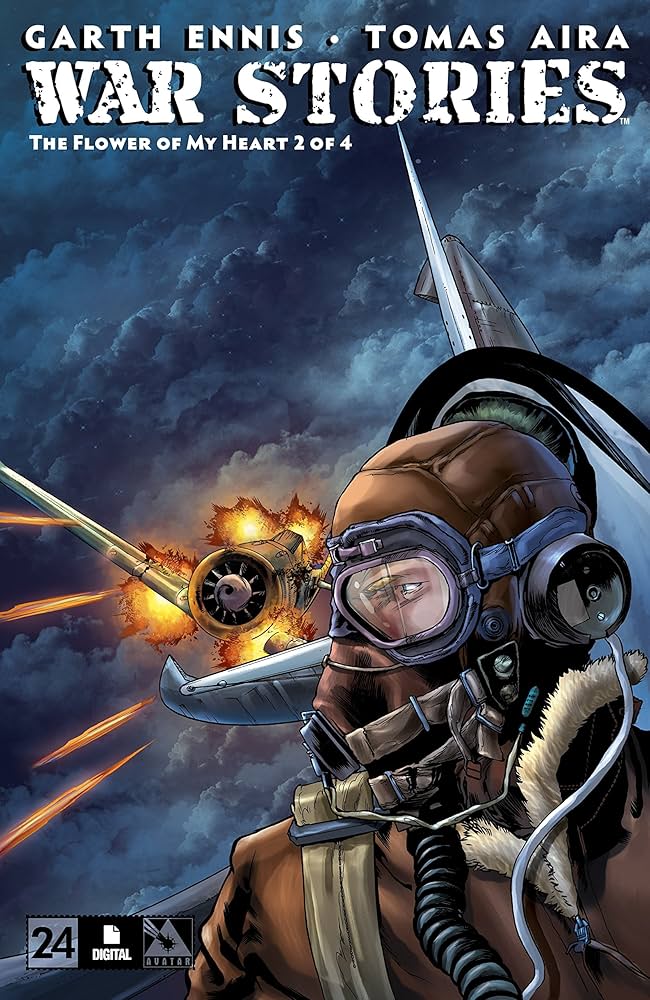Saddle up, Vaqueros!
With 15 days to go, we are at approx. 200% funding, which is a tremendous show of support.
We received Diego Giribaldi's final artwork for his variant cover, and we wanted to share it, because it looks spectacular!!

In case you missed it, last week we hit our goal for translating the comic into Spanish (available as a PDF) for our Spanish-speaking fans. ¡Que fantastico!
***
Mishka (our producer) spoke to Tomás (our artist) about his love of comics, and his process for illustration - we’ll post the Spanish audio soon, but you can read the English transcript here:
Mishka: Okay, the first question, Tom, is: What is your favorite western? It could be a comic, novel, or movie.
Tomás: The Searchers by John Ford, starring John Wayne. I saw it recently and thought it was spectacular.
Yes, very intense. It’s not perfect, but there’s a lot of material, a lot of depth, cruelty, subtext, and things happening off-camera.
It’s an example of a movie that lets you keep talking and thinking about it afterward, which isn’t so common these days. It has its flaws, but it’s very good.
Who am I to point out flaws in a John Ford movie? But anyway, The Searchers with John Wayne.

M: Great, sounds awesome. I’ll watch it since I haven’t seen it.
T: It’s a masterpiece, really.
M: Okay, and what’s your favorite horror thing?
T: I don’t watch many horror movies, but Night of the Living Dead, the original black-and-white one from 1968, left a very positive impression on me.
I really liked it a lot. I expected something campy but found something very interesting.
I enjoyed it, enjoyed it a lot.
M: Nice, look at that... what a surprise. I like it, I like it… So, What’s the first comic you remember reading?
T: Absolutely? The Thundercats comics... and the Transformers comics sold at newsstands. That’s what I read as a kid.
I had all the Thundercats comics from the newsstands—I must’ve been seven. And well... they started in medias res, with the Thundercats already on Earth. But I’d seen the first episode where they were on the ship, so I drew my own adaptation of what I remembered because the episode wasn’t re-aired. That’s how things worked pre-streaming, right? TV just aired stuff once.
I’d only seen that episode once, and it was all I had, so I drew a few pages when I was six or seven.
M: What was your first professional project? Actually, more than that, which professional project has marked you the most?
T: Well, I’ve been making comics since that Thundercats comic at six. I always did a bit here and there, made some fanzines in the ’90s—those already had the format, speech bubbles, all the professional concerns were there: making sure it reproduced well, inking it so photocopies would turn out, etc.
But in 2006, I did 78 Kilómetros por Hora with Mauro Mantella’s script, and that’s kind of what I consider the start of my career.
Not long after that, I got the scripts for War Stories, and for me, that’s a high point, even though it’s hard for me to look at those pages now because I don’t like how they turned out. But hey, it was all a learning process. Walter Taborda used to say, “Getting paid to learn? You don’t know how to draw? Don’t like your style? Well, get a job and improve while you’re on salary.”

M: That’s very good, very admirable.
T: Very, very wise. But yeah, there’s a lot of work I can’t look at now, but that’s how it is.
M: How do you like to work? Do you listen to music, sit down with a podcast, drink coffee, work in the morning, or at night?
T: I work a lot in the morning. I use the Pomodoro technique— 15-minute alarms with 5-minute breaks — and usually listen to podcasts, audiobooks, or YouTube livestreams that are audio-only. The exception is when I’m reading the script or doing the first layout; then I listen to music, rotating artists, preferably without lyrics so I can focus on the script. But for the heavier work — inking, final pencils — I’m always listening to an audiobook.
M: When you hit a block or a difficult part, what motivates you to keep going?
T: I have a “fall forward” policy — I persevere. If I’m really stuck, usually on a panorama or complex perspective (which takes hours for a single panel), I use the Pomodoro method: 15 minutes on one panel, then 15 on the next, and so on. That way, the toughest panel feels like it’s getting done bit by bit.
M: Do you go back and forth?
T: Yes, back and forth.
M: What do you enjoy most about working in comics?
T: There’s something about learning. Recently, I drew a pirate comic and had to draw a tricorn hat for the first time. I realized it’s just a common round-brimmed hat with buttons on top. That kind of thing fascinates me.
The same happened with Dead Money — discovering train models, the history of Pullman cars. Drawing is about understanding, and that’s always thrilling to me.
M: Super interesting. I always use you as an example in my classes — how you research topics. That’s exactly what you’re talking about: learning. When I teach narrative, that’s something that always comes up. Like, if you’re writing about the Middle Ages, you need to understand what happened then, you know?
T: Exactly.
M: So you’re a great example, honestly.
T: Thanks.
M: Last question: What drew you to this project?
T: Drawing non-futuristic things. I love sci-fi, but things set in the past — even if not too distant — have something organic about them. That’s more fun to draw, less pressure. The textures of clothes, crudely made wooden objects — things that inhabit westerns, like clapboard houses in the Old West — have an organic texture that’s more enjoyable than something cold or futuristic. Even when I draw modern stuff, I like it to look worn, to bring that organic stroke into the harder forms of present-day objects.
M: Okay, thanks, Tom!
If you haven’t yet seen it, please check out the Kickstarter Campaign here:
https://www.kickstarter.com/projects/deadmoney/dead-money-a-western-horror-comic-book